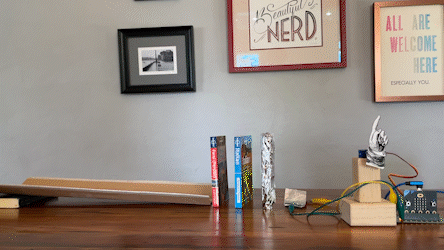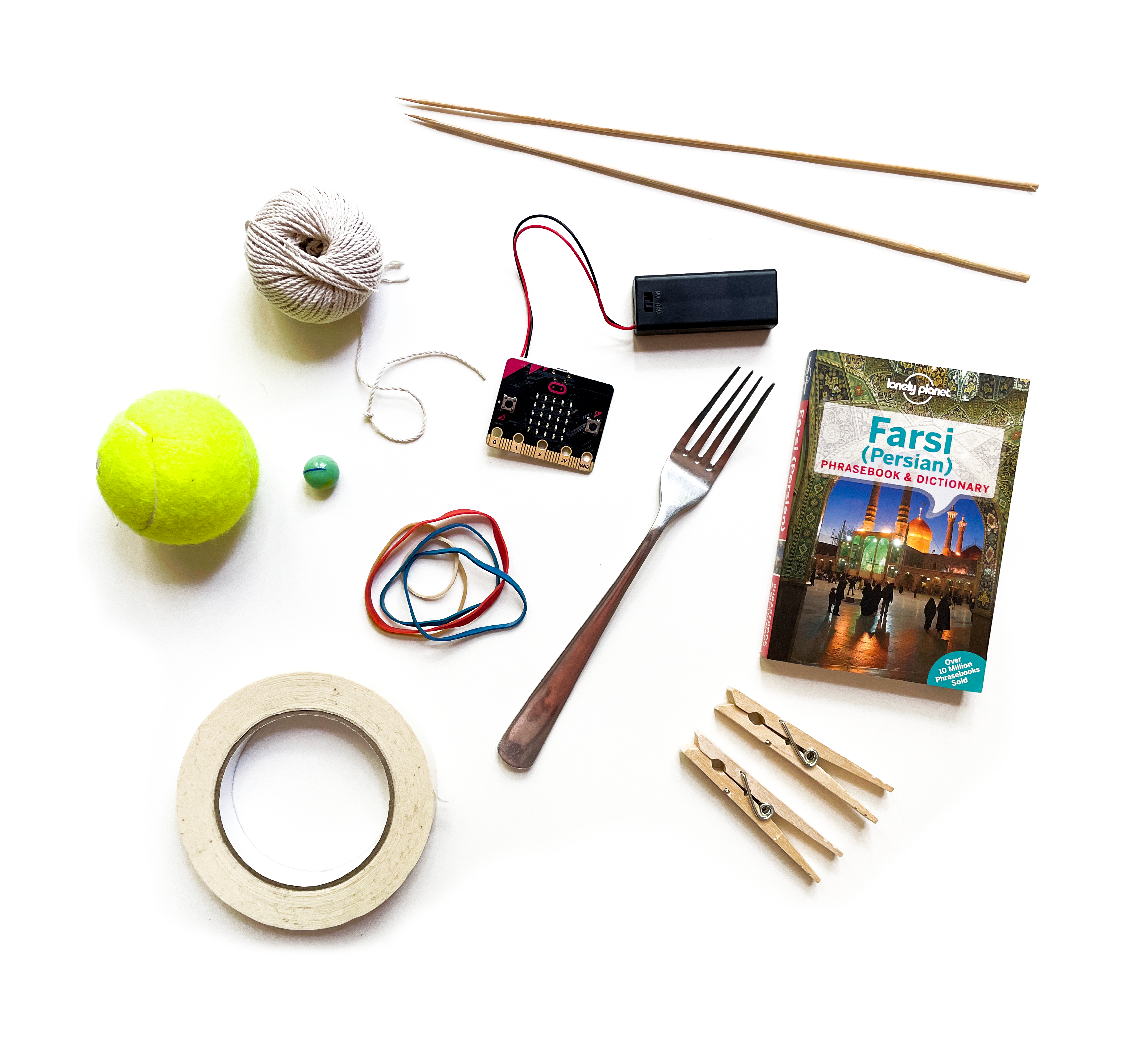Make a Plan
In this activity, you and a partner will make a plan for your section of the chain reaction machine.
What is a Chain Reaction?

A chain reaction is a sequence of causes and effects that often accomplishes a task in a somewhat impractical manner. They often feature everyday household items that are transformed into parts of a machine that carry momentum forward and help the reaction unfold.
In this lab, your class will build a chain reaction machine together. You and a partner will take one section of the chain reaction, which will consist of multiple parts. Your team can use whatever materials and tools in your section, but it must set off the contraption of the next pair. The result will be a continuously flowing chain reaction machine.
Collect Materials


- Any materials from Labs 1-6
- General Building Materials
- String
- Cardboard tubes
- Rubber bands
- Clothespins
- Paper cups
- Push pins
- Skewer sticks
- Washers
- Interesting Building Materials
- Plastic car tracks
- Dominoes
- Pulley
- Feathers
- Balloons
- Fan
- Glue and Adhesives
- Blue tack
- Masking tape
- Hot glue
Elements to a Chain Reaction
A chain reaction can consist of both analog and digital materials. Consider including a variety of materials when building your segment.
Use both micro:bits to help move the chain reaction along, and consider using elements such as:
- The LED display
- Basic Sensors, such as
tilt, acceleration, and light level
- Servo motors
- External LEDs
- Radio communication
Here are some example physical, no-tech elements:
- Dominoes falling over
- A ball rolling down a ramp
You may also include some low-tech elements, such as:
- A homemade switch that turns something on/off
- A fan blowing air
Plan Your Segment
- With a partner, pick a section of the chain reaction to complete.
- Make a plan with your partner what you want to create that incorporate the following elements:
- Two micro:bits
- A variety of analog materials
- A story or theme
- Also, plan out with neighboring pairs how each of your segments will connect to one another. Place a piece of tape on the part of the table where your two chain reaction segments will connect.
In this activity, you made a plan with your partner for what elements of the chain reaction you want to include in your segment.


